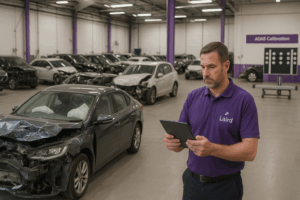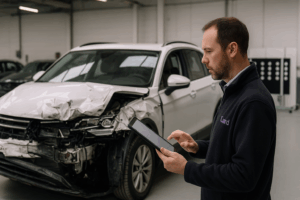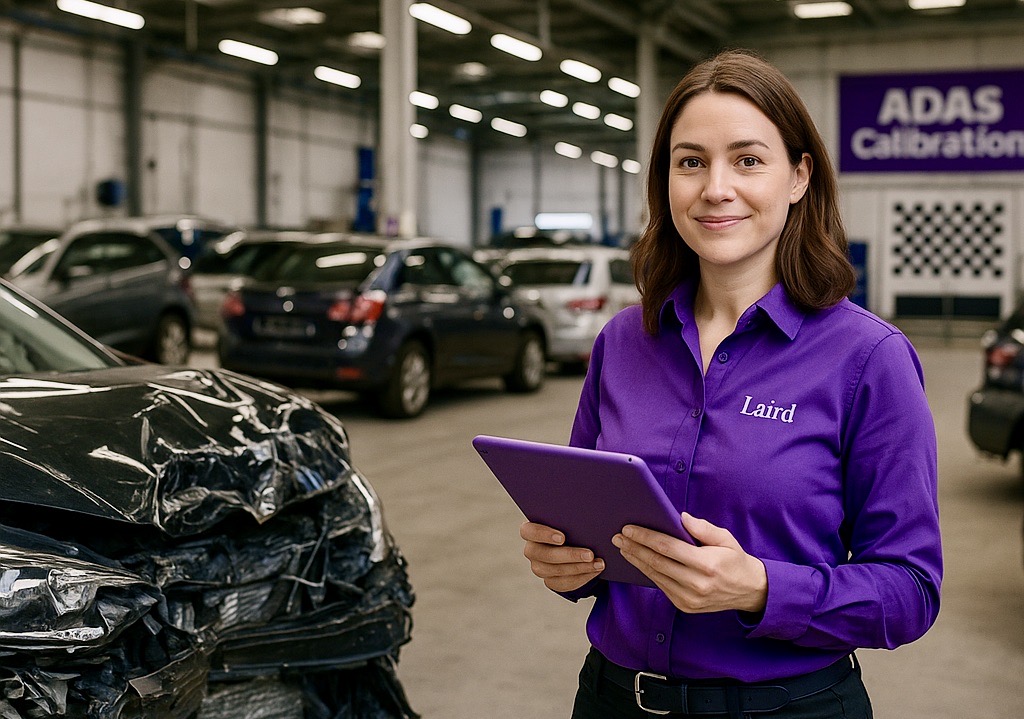Rising Repair Costs & Advanced Vehicle Complexity
I’ve never seen so many new features being added to run of the mill cars. The modern motor vehicle is extraordinary in its sophistication. No longer mere mechanical conveyances, cars today are sophisticated sensor-laden platforms featuring Advanced Driver Assistance Systems (ADAS), radar, cameras, autonomy-support systems, complex infotainment technologies and built with carbon-fibres, plastics, aluminium, etc. While these innovations are enhancing safety and driver experience, they are imposing significant challenges and costs on the insurance and repair ecosystem.
1. Soaring Repair Costs: A Wake-Up Call
- In the UK, the annual bill for ADAS-related repair and recalibration has now exceeded £2.9 billion, according to recent industry analysis.
- From 2019 to 2025, the average repair cost for non-fault claims rose from £4,162 to £5,191 representing a 24.7% increase.
- Over the same period, the percentage of vehicles written off climbed from 58% to 66%, increasing the write-off rate by eight percentage points.
2. The Invisible Drivers: Parts, Labour, and Complexity

- The average number of replacement parts per repair has increased by 15% over the past five years, and now constitutes roughly half of the total repair cost.
- Globally, average repair costs have surged 40% since 2021, significantly driven by inflation in parts and energy, as well as growing technical complexity according to Solera.
- In the UK, premium hikes of over 20% year-on-year are being driven by escalating repair and vehicle replacement costs.
3. Total Loss: The New ‘Normal’
- As of 2023, 27% of vehicles involved in collisions were declared a total loss, an all-time high, largely due to the prohibitive cost of repairing ADAS and electronic-rich components.
- Insurers increasingly conclude that a replacement is more cost-effective than repairing vehicles laden with ADAS components, even when structural damage is limited.
4. A Laird Assessor’s Perspective: Bridging the Gap
From our vantage point at Laird, the divergence between real-world repair needs and insurer estimates is widening:
- Many estimation systems still operate on outdated assumptions, often ignoring the nuanced costs of recalibrating sensors or aligning radar and camera systems.
- Bodyshops equipped with OEM tooling and qualified staff are indispensable, yet insurer platforms frequently undervalue the necessity and cost of such expertise.
- In numerous borderline cases, even when a vehicle is safely repairable, insurers may opt to write it off because their valuation models fail to account for these complexities, leaving both policyholders and repairers disadvantaged.
 5. Longer-Term Implications: Redefining the Industry Landscape
5. Longer-Term Implications: Redefining the Industry Landscape
For Policyholders
- Expect further upward pressure on premiums, especially for tech-laden vehicles or EVs.
- Without nuanced valuation and repair frameworks, fully operational but complex vehicles continue to be slated for write-off.
For Repairers and Assessors
- Demand for ADAS tool investment and OEM-aligned training will accelerate those without it risk obsolescence.
- Independent assessors are becoming pivotal in ensuring fair, accurate appraisals acting as vital intermediaries in a fragmented claim process.
For Insurers
- Without embracing more sophisticated, transparent models that recognise vehicle complexity, insurers risk eroding trust with both shops and customers.
- Advances such as Total Loss Avoidance schemes like the Volvo or Toyota programmes that rescue otherwise salvageable vehicles from write-off offer a path to cost savings and better customer outcomes.
Industry Trends
- The collision repair market is projected to grow from USD 1,033.6 billion in 2025 to USD 2,065.2 billion by 2035, reflecting both scale and complexity growth.
- The long-term sustainability of motor insurance hinges on collaboration between insurers, assessors, manufacturers, and repairers to efficiently meet modern vehicle repair needs.
Conclusion
As a Laird independent assessor, I’m witnessing firsthand the seismic shift reshaping vehicle repairs. While advanced vehicle technology promises safer roads, it also introduces hidden costs, vulnerabilities in valuation models, and growing gaps between insurer practices and repair realities.
If the industry fails to adapt, by acknowledging real-world complexity, investing in accurate assessment, and galvanising cohesive repair ecosystems then consumers may increasingly bear the brunt of misunderstood costs and unnecessary write-offs.
At Laird, we stand committed to championing precision, fairness, and the expert insight needed to keep both vehicles and claims on the road.

